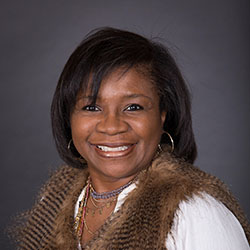Dreaming of starting your own business but not quite sure where the most opportunity could be found? Here’s a look at the industries that have proven successful for female entrepreneurs (who now account for four out of every ten new businesses opened) — and which may present the best opportunities for aspiring women-business owners.
Demand in the industries that serve life’s guarantees. As the saying goes, there are two certainties in life: Death, and taxes. Appropriately, Entrepreneur reports that demand for home health care services grew by double digits year over year, despite (and throughout) the recession. Similarly, the demand for death care services and tax accounting also remained steady, despite economic downturns. According to “The 2014 State of Women-Owned Businesses Report” (commissioned by American Express), data indicates that female ownership of businesses in the financial and insurance sectors has increased from 11 percent to 17 percent, from 2002 to 2014. The percentage of female-owned health care and social services oriented businesses also increased, though not as dramatically, from 41 percent to 44 percent in the same time period.
Consider “recession-proof” industries. Fidelity advises that stocks issued by companies that sell consumer staples, utilities and health care-related products or services often perform in a fairly reliable manner, despite economic downturns, for a simple reason: Consumers need the items, and are more likely to slash spending in other areas of their budget, to afford them. The same logic is supported in the data collected as part of the AMEX commissioned study. Based on the industries with the highest concentration of female owners, 53 percent of small businesses in the health care and social services sector overall, including doctors, dentists, and child care services, are owned by women. The second-highest concentration of women owned businesses (42 percent) fall into the “other category” which includes auto and appliance repair, pet care and beauty salons.
Consider the changing reality of the professional world. The costs of college are steadily rising, yet it’s becoming more than the “rule” than the exception that one must have an education beyond high school to secure employment. Women-business owners are taking note of the demand: Over the past 12 years, women-owned businesses in the education-services sector have jumped 128 percent, according to the AMEX commissioned report noted above.
Go where most women aren’t. Just as opportunity for women in sectors like health care and financial services is evidenced by the steady growth in the respective spaces and a high concentration of female ownership, women entrepreneurs may also find success in industries that the majority of women overlook. According to data analyzed as part of the AMEX study, for example, just 11 percent of small businesses serving the transportation and warehousing industries are owned by women, as are just 7 percent of construction firms. Aside from less competition among female entrepreneurs in such underrepresented sectors, there may be additional opportunity, in terms of financing, and government-supported opportunities.
As small business advocate Geri Stengel wrote in a Forbes article, women entrepreneurs tend to have greater problems finding financing compared to males — largely because females are more likely to open businesses in industries that lenders are more hesitant to finance (like retail). By going where most women aren’t, the likelihood of securing similar grants aimed particularly at women-owned businesses, and contractual opportunities may be greater. For example, in May 2013, the U.S. Small Business Administration updated the guidelines to its federal contracting program in an effort to give women-owned small business (WOSB) a better chance of securing federal contacts. Though a business must be at least 51 percent owned, controlled and managed by a woman who is a U.S. Citizen in order to qualify, the opportunity amounts to several billions of dollars that are essentially “up for grabs” for female entrepreneurs. Additionally, there are programs designed to help women-owned business deemed to be at an economic disadvantage (EDWOSB’s), provided that the business owner’s personal net worth is less than $750,000 and her adjusted gross income was less than $350,000 over the course of three years.
About Author: Kristen Gramigna is Chief Marketing Officer for BluePay, a credit card processing firm commonly used by entrepreneurs, and also serves on its Board of Directors. She has more than 20 years experience in the bankcard industry in direct sales, sales management and marketing.

















